Introduction
Roma Tre University, also known as the Third Public University of Rome, is the youngest national university in Rome, Italy, but it is the second largest university in Rome in terms of student numbers, faculty and campus area.
Overview
Student size: about 35,000 students.
Number of faculty: 1,370 academic and professional staff.
History and establishment time
Roma Tre University was founded in 1992. Its birth was based on the current situation of the surge in the number of people who wanted to receive higher education in Italy at that time. In the mid-1980s, the Italian Ministry of Public Education established a higher education investigation committee to respond to the emergency of the enrollment of the University of Rome. After much debate, a semi-industrial area of the city was selected as the location of the future campus, and it was decided to name the future university in chronological order with numbers. The University of Rome Tre was officially established.
School strength
Teaching staff: 1,370 Academic and professional staff, including experts with rich teaching and research experience in their respective fields, are able to provide students with high-quality education and guidance.
Scientific research level: As a research-oriented university, the university's scientific research strength is constantly improving. It has carried out in-depth research in multiple disciplines and has achieved certain scientific research results, making positive contributions to promoting academic progress and social development.
International cooperation: It has established cooperative relations with many internationally renowned universities, such as signing dual degree agreements with the University of Murcia, the University of Poitiers, and the University of Nova Southeast. It also has extensive academic cooperation with the University of Brasilia and the Federal Institute of Technology in Lausanne, and actively promotes international exchanges and cooperation between students and teachers.
Institutional nature
Public university.
Educational philosophy
Focus on cultivating students' innovative and practical abilities, and is committed to providing students with high-quality educational resources and a good learning environment, so that students can give full play to their potential and become professionals with social responsibility and international vision.
Key laboratories and disciplines
Key laboratories: The school has a number of advanced laboratories and research centers, which provide strong support for scientific research, but the specific key laboratory information is not yet clear.
Advantageous disciplines:
Architecture: The School of Architecture has always been ranked among the top three in Italy, and the school has exchange programs with many universities in the European Union, the Middle East, the United States and Eastern Europe.
Law: The School of Law is located in the Ostiense district of Rome. It ranks between third and fifth among more than 60 law schools in Italy, and is the only school in Rome that offers a clinical law program, which focuses on human rights, immigration and refugee law.
Economics: Federico Caffe School of Economics has established cooperative relations with many domestic and foreign companies and institutions, providing students with abundant internship and employment opportunities.
Faculty
The school has 8 schools, namely the School of Architecture, Federico Caffe School of Economics, School of Education, School of Engineering, School of Law, School of Literature and Philosophy, School of Mathematics, Physics and Natural Sciences and School of Political Science, with a total of 29 departments covering a wide range of subject areas.
Ranking
2024 Times Higher Education World University Rankings: 601-800.
2023 USNews World Best University Rankings: 564.
Expenses
As a public university, the tuition fees of the University of Rome Tre are relatively low, about 1000-2000 euros per year, but the specific fees may vary depending on the major and course. In addition, the school also provides preferential policies such as scholarships and grants for outstanding students to reduce the financial burden of students.
Campus Environment
Geographic location: The main campus is located in the Ostiense district of Rome. Rome is the capital and largest city of Italy, and is also the national political, economic, cultural and transportation center. It has many historical and cultural relics and tourist attractions, such as the Colosseum, Vatican City, Trevi Fountain, etc., providing students with a wealth of cultural and entertainment venues.
Teaching facilities: The school has multiple modern campuses equipped with complete teaching facilities, including libraries, laboratories, computer centers, etc., which provide good conditions for students' study and research. Among them, the School of Architecture is located in the former comprehensive market in Rome, which is a historical building with important architectural significance and provides a unique learning environment for students majoring in architecture and design.
Living facilities: The living facilities around the campus are complete, including student dormitories, canteens, supermarkets, etc., to meet the daily needs of students. In addition, the school also provides a series of services for international students, such as welcome activities, language courses, visa and residence permit assistance, etc., to help students better adapt to study and life in Italy.
-
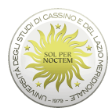
University of Cassino and Southern Lazio
-

University of Campania Luigi Vanvitelli
-
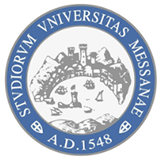
University of Messina
-
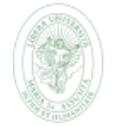
Libera Universita degli Studi Maria SS. Assunta di Roma (LUMSA)
-
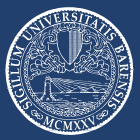
University of Bari Aldo Moro
-
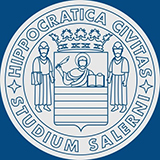
University of Salerno
-
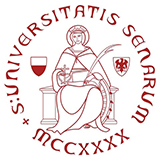
University of Siena
-
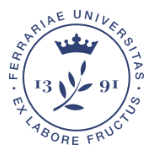
University of Ferrara
-
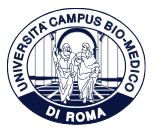
Campus Bio-Medico University of Rome
-

University of Genoa
-

Mesoamerican University
-

Istmo University
-

Mariano Galvez University of Guatemala
-

Regional University of Guatemala
-

Galileo University
-

Francisco Marroquín University
-

Rafael Landívar University
-

University of the Valley of Guatemala
-

University of San Carlos of Guatemala
-

Technological Institute of Tlaxcala Plateau
-

Golfo University
-

Technological University of South Sonora
-

Technological University of Huejotzingo
-

Tizimín Institute of Technology
-

Chilpancingo Institute of Technology

